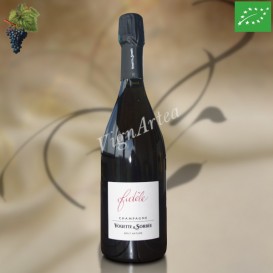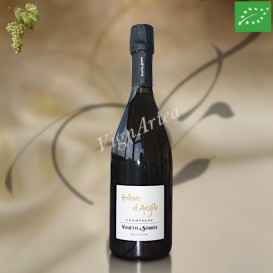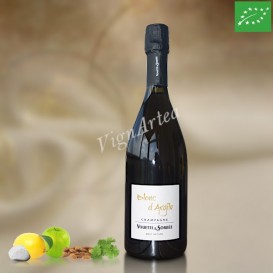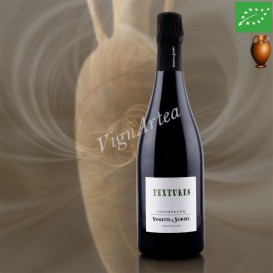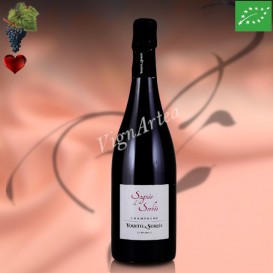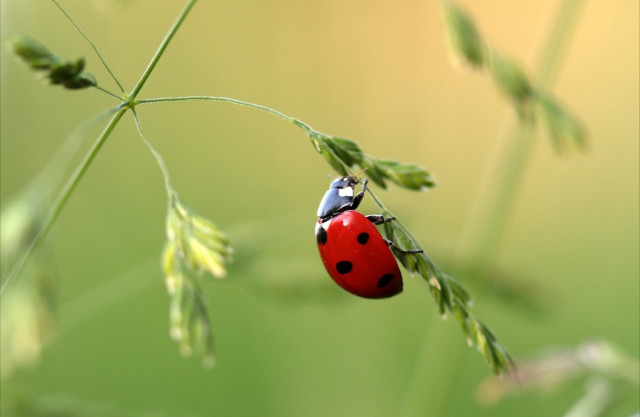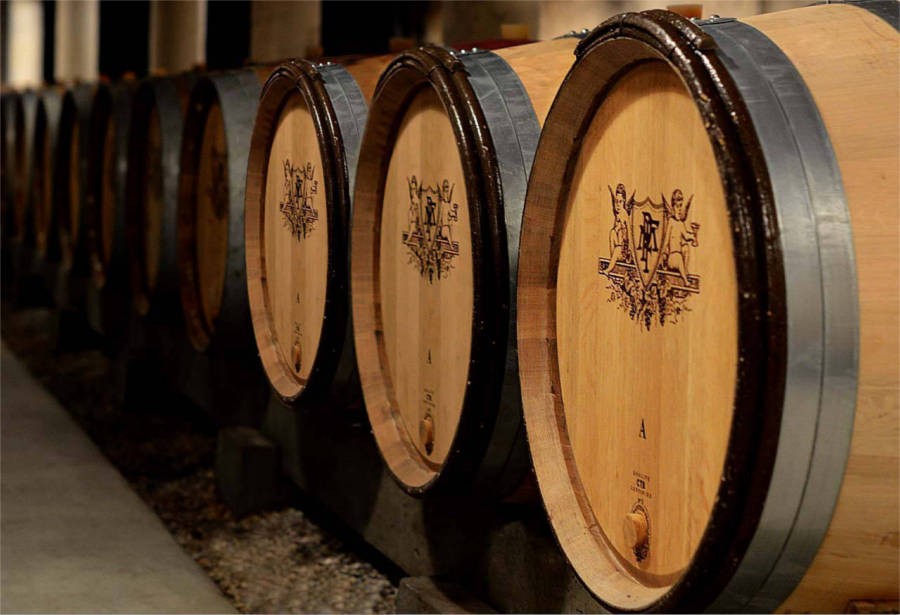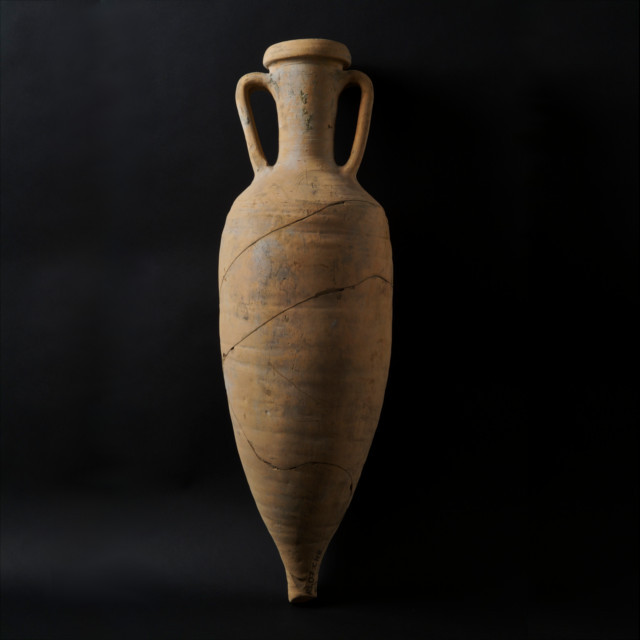Champagne VOUETTE ET SORBÉE

CHAMPAGNE CÔTE DES BAR 5 ha ORGANIC FARMING WINEMAKER : Bertrand GAUTHEROT
ESTATE HISTORY
The CHAMPAGNE VOUETTE & SORBÉE estate is located in Buxières-sur-Arce, in the Côte des Bar region. Discreet but highly renowned, this small champagne estate proudly displays the letters of the places where the grapes are grown: Vouette and Sorbée.
This detail may seem amusing and original to us, but it reflects the philosophy of life and work of the winemaker, Bertrand GAUTHEROT. In love with the land of his village, and with an endless curiosity, he has chosen to step aside and pay tribute to dearest thing he holds : his terroir. The winemaker seeks so much to transcribe this land he cares in his champagnes that the soil's hard rock is expressed in each burst of bubbles.
After a first professional experience in Paris, Bertrand GAUTHEROT joined his father who ran the estate and delivered the grapes to a cooperative. But the young winemaker was disappointed by the expression of the produced champagnes. He therefore decided to create his own champagne that would bear an identity: the village's terroir. Fascinated by the pedology and the world of life science, he shook up the festive image of this drink that flows freely in social evenings to make it a champagne to be savoured, a champagne of pleasure. His grail? "to taste the earth through its wines"; he produced his first cuvées in 2001.
TERROIR
The Côte des Bar terroir contrasts with the chalky plain of the Marne: the hillsides here are formed of calcareous marls and hard limestones from the Upper Jurassic (-161 Ma and -145 Ma),a period during which the Champagne region was subject to numerous vertical movements of the earth's crust, known as epirogenic movements, which are said to be positive when the crust rises, and negative when it sinks.
These repetitive movements of the basement will cause successive sea arrivals and withdrawals and thus shape the different geological facies of the region.
In the Kimmeridgian (155 Ma to 155 Ma), the subsidence of the earth's crust led to a large-scale marine transgression which gave rise to the marl and limestone sedimentation characteristic of this geological period, and more particularly to the Virgulian period, which takes its name from a small, fossilised and abundant oyster found in the marl and limestone banks: the Exogyra Virgula.
In the Portlandian (-150 to -145 Ma), a powerful positive epirogenic movement (uplift of the earth's crust) of long duration caused a general emersion of the region, resulting in a very hard limestones formation, which are used today as ashlar.
These two types of soil are perfectly represented by the localities of Vouette, resting on Kimmeridgian marls with alternating limestone banks rich in oyster fossils (Exogyra Virgula), and Sorbée , which offers a hard limestone soil dating from the Portlandian. Three quarters of the vines are planted in Kimmeridgian soil, the remaining quarter in Portlandian soil.
WINEGROWING & WINEMAKING
The Vouette & Sorbée estate, created in 1986, has been certified Organic Agriculture since 1998, under the impetus of Bertrand GAUTHEROT who decided to completely transform the cultivation method of the plots: putting an end to the sustainable cultivation practices of his father, he progressively converted the estate into Organic and Biodynamic farming. Even the compost is 'home-made', and the estate raises its own cows for this purpose.
The results are tangible: the soil is loose and the vine develops its root system vertically, rather than horizontally, in order to draw water deep in the soil: the water, through its slow run-off into the limestone rocks, is enriched with calcium carbonate and these minerals, drawn by the vine's roots, are found in the grapes and then in the wine.
The grapes are harvested by hand with successive passages in the vines according to their maturity: the harvest thus lasts on average three weeks. The grapes are pressed using a vertical press of Coquard type and the juice flows into vats to be settled, before being racked and vinified in 400-litre barrels or Burgundy pieces, but also in clay-amphorae as for the Texture cuvée, for example.
The alcoholic fermentation starts spontaneously under the action of indigenous yeasts and is then followed by the malolactic fermentation.
After a short maturation phase, the wines are bottled without fining or filtration, with a liqueur de tirage for the second fermentation phase during the slats ageing phase that lasts about 18 to 24 months depending on the cuvée. After disgorging, no sugar is added, except in exceptional and extremely rare cases, so as not to modify the aromatic profile of the wine. All the cuvées are therefore Brut Nature champagnes.
-
FIDÈLE (Champagne VOUETTE & SORBEE) - R 20
71,00 € OUT OF STOCK!OUT OF STOCK!COTE DES BAR - AOP CHAMPAGNE - BLANC DE NOIRS CHAMPAGNE
Grape variety: Pinot Noir (100%)
Brut Nature Sugar addition: 0 g/l
Winemaking in 400 & 228 liter oak barrels- Color: slightly pink color.
- Nose: intensely aromatic. Brioche notes, aromas of pink grapefruit, candied orange and lemon.
- Palate: lively juice with a delicate touch, evoking the pebble.
- Tasting date: tasting note of the 2018 harvest.
- OUR OPINION: the tiny quantities supplied do not allow me to sacrifice a bottle for tasting. As those wines are of impeccable quality year after year, I wrote the tasting notes of the 2018 harvest as an indication.
The exceptional bottle's weight (1.8kg) may result in higher shipping costs for the final shopping cart.
- Color: slightly pink color.
-
BLANC D'ARGILE R 20 (Champagne VOUETTE & SORBÉE)
92,00 € In stock!COTE DES BAR - AOP CHAMPAGNE - BLANC DE BLANCS CHAMPAGNE
Grape variety: Chardonnay (100%)
Brut Nature Native yeasts Sugar addition: 0 g/l
Winemaking in 400 & 228 liter oak barrels- Nose: fresh and chalky. Notes of lemon, green apple, almond, with a hint of St George's mushroom.
- Palate: tight and lemony. Bubbles barely perceptible. Pebbly finish.
- Tasting date: July 2024.
- OUR OPINION: for lovers of taut champagnes. This is a very mineral, fresh vintage with a long ageing potential.
Other harvest available:
The exceptional bottle's weight (1.8kg) may result in higher shipping costs for the final shopping cart.
- Nose: fresh and chalky. Notes of lemon, green apple, almond, with a hint of St George's mushroom.
-
BLANC D'ARGILE R 19 (Champagne VOUETTE & SORBÉE) - D: 22/10
93,00 € In stock!COTE DES BAR - AOP CHAMPAGNE - BLANC DE BLANCS CHAMPAGNE
Grape variety: Chardonnay (100%)
Brut Nature Native yeasts Sugar addition: 0 g/l
Winemaking in 400 & 228 liter oak barrels- Nose: very fresh. Aromas of green apple, lemon, almond with some brioche notes.
- Palate: tonic and aromatic. Beautiful length. A touch of honey on the finish. The bubble is fine.
- Tasting date: November 2022.
- OUR OPINION: Perfect balance. This champagne is always so tasty and thirst-quenching, one of those that gives you a boost! Superb!
Other harvest available:
The exceptional bottle's weight (1.8kg) may result in higher shipping costs for the final shopping cart.
- Nose: very fresh. Aromas of green apple, lemon, almond with some brioche notes.
-
TEXTURES (Champagne VOUETTE & SORBÉE) - R 19
105,00 € In stock!COTE DES BAR - AOP CHAMPAGNE - BLANC DE BLANCS CHAMPAGNE
Grape variety: Pinot blanc (100%)
Brut Nature Qvevri
Sugar addition: 0 g/l- Nose: aromatic. Notes of baked apple, candied lemon with a hint of peppermint.
- Palate: tense. Frank and lemony attack. Long finish.
- Tasting date: November 2022.
- OUR OPINION: the skin maceration, even in small percentages, brings candied aromas to the nose, but the palate remains tense. A real curiosity!
The exceptional bottle's weight (1.8kg) may result in higher shipping costs for the final shopping cart.
- Nose: aromatic. Notes of baked apple, candied lemon with a hint of peppermint.
-
SAIGNÉE DE SORBÉE (Champagne VOUETTE & SORBÉE) - R 19
112,00 € OUT OF STOCK!OUT OF STOCK!COTE DES BAR - AOP CHAMPAGNE - ROSÉ CHAMPAGNE
Grape variety: Pinot noir (100%)
Brut Nature Native yeasts Sugar addition: 0 g/l
Winemaking in 400 & 228 liter oak barrels- Nose: extremely tasty. Intense notes of cherry, strawberry, raspberry and a hint of blackcurrant. Slight brioche notes.
- Palate: supple attack. Bubbles barely perceptible. Perfectly balanced and nicely perfumed juice. Long cherry finish.
Tasting date: November 2022.
OUR OPINION: almost vinous, this champagne, like all those of the estate, has that little something that makes it unique and extremely tasty!
The exceptional bottle's weight (1.8kg) may result in higher shipping costs for the final shopping cart.
- Nose: extremely tasty. Intense notes of cherry, strawberry, raspberry and a hint of blackcurrant. Slight brioche notes.

